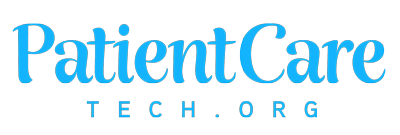Understanding and Assisting with Different Medical Conditions: A Guide for Patient Care Technicians
As a Patient Care Technician (PCT), you play a vital role in the healthcare team, often being the frontline of patient interaction and care. Understanding various medical conditions and knowing how to assist patients effectively can significantly enhance the quality of care you provide. In this blog, we will explore several common medical conditions you might encounter and offer guidance on how to assist patients with each.
Diabetes
Diabetes is a chronic condition characterized by high blood sugar levels due to the body’s inability to produce or effectively use insulin.
Signs and Symptoms:
- Frequent urination
- Increased thirst and hunger
- Fatigue
- Blurred vision
Assisting Patients:
- Monitor blood sugar levels regularly.
- Ensure patients follow their dietary plan.
- Assist with insulin administration if needed.
- Educate patients about the importance of foot care and regular check-ups.
Hypertension (High Blood Pressure)
Hypertension is a condition where the force of the blood against the artery walls is too high, often leading to heart disease and other complications.
Signs and Symptoms:
- Often asymptomatic
- Severe hypertension may cause headaches, shortness of breath, or nosebleeds.
Assisting Patients:
- Regularly check and record blood pressure.
- Encourage a low-sodium diet and regular exercise.
- Assist with medication adherence.
- Educate on lifestyle changes to manage blood pressure.
Chronic Obstructive Pulmonary Disease (COPD)
COPD is a group of lung diseases, including chronic bronchitis and emphysema, that cause obstructed airflow and breathing difficulties.
Signs and Symptoms:
- Chronic cough
- Shortness of breath
- Frequent respiratory infections
- Wheezing
Assisting Patients:
- Monitor oxygen levels and assist with oxygen therapy.
- Encourage pulmonary rehabilitation exercises.
- Help patients with breathing techniques.
- Ensure medication adherence and manage inhalers.
Heart Failure
Heart failure occurs when the heart is unable to pump enough blood to meet the body’s needs.
Signs and Symptoms:
- Shortness of breath
- Fatigue
- Swelling in legs, ankles, and feet
- Rapid or irregular heartbeat
Assisting Patients:
- Monitor vital signs, including heart rate and blood pressure.
- Assist with daily weight monitoring to track fluid retention.
- Encourage a low-sodium diet and fluid restrictions.
- Help with medication adherence and educate on the importance of following the treatment plan.
Dementia
Dementia is a decline in cognitive function affecting memory, thinking, and social abilities severely enough to interfere with daily life.
Signs and Symptoms:
- Memory loss
- Difficulty communicating or finding words
- Disorientation and confusion
- Changes in mood and behavior
Assisting Patients:
- Create a safe and supportive environment.
- Use clear and simple communication.
- Help with daily activities and personal care.
- Provide mental stimulation through activities and engagement.
Arthritis
Arthritis is inflammation of the joints, causing pain and stiffness that can worsen with age.
Signs and Symptoms:
- Joint pain and swelling
- Stiffness, especially in the morning
- Decreased range of motion
Assisting Patients:
- Assist with mobility and encourage gentle exercise.
- Apply heat or cold therapy as needed.
- Help with tasks that require fine motor skills.
- Educate on the use of assistive devices.
Tips for Effective Patient Assistance
- Empathy and Compassion:
- Always approach patients with empathy and compassion, understanding that living with a chronic condition can be challenging.
- Education and Empowerment:
- Educate patients about their condition and empower them to take an active role in managing their health.
- Communication:
- Maintain clear and open communication with patients and the healthcare team to ensure coordinated and effective care.
- Observation:
- Be vigilant and observe any changes in patients’ conditions, reporting them promptly to the healthcare provider.
- Patience:
- Exercise patience, especially with patients who may have cognitive impairments or require additional time to complete tasks.
By understanding these common medical conditions and knowing how to assist patients effectively, you can make a significant difference in their healthcare experience. Your role as a PCT is crucial in providing compassionate, informed, and effective care to those in need.



